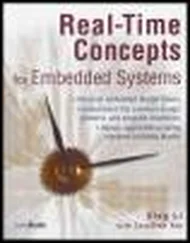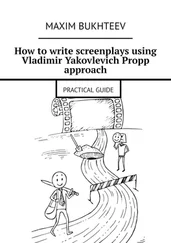Prentice Hall Open Source Software Development Series
Arnold Series Editor Robbins
"Real world code from real world applications"
Open Source technology has revolutionized the computing world. Many large-scale projects are in production use worldwide, such as Apache, MySQL, and Postgres, with programmers writing applications in a variety of languages including Perl, Python, and PHP. These technologies are in use on many different systems, ranging from proprietary systems, to Linux systems, to traditional UNIX systems, to mainframes.
The Prentice Hall Open Source Software Development Seriesis designed to bring you the best of these Open Source technologies. Not only will you learn how to use them for your projects, but you will learn from them. By seeing real code from real applications, you will learn the best practices of Open Source developers the world over.
Titles currently in the series include:
Linux ® Debugging and Performance Tuning: Tips and Techniques
Steve Best
0131492470, Paper, ©2006
Understanding AJAX: Using JavaScript to Create Rich Internet Applications
Joshua Eichorn
0132216353, Paper, ©2007
Embedded Linux Primer
Christopher Hallinan
0131679848, Paper, ©2007
SELinux by Example
Frank Mayer, David Caplan, Karl MacMillan
0131963694, Paper, ©2007
UNIX to Linux ® Porting
Alfredo Mendoza, Chakarat Skawratananond, Artis Walker
0131871099, Paper, ©2006
Linux Programming by Example: The Fundamentals
Arnold Robbins
0131429647, Paper, ©2004
The Linux ® Kernel Primer: A Top-Down Approach for x86 and PowerPC Architectures
Claudia Salzberg, Gordon Fischer, Steven Smolski
0131181637, Paper, ©2006
Computers are everywhere.
This fact, of course, is not a surprise to anyone who hasn't been living in a cave during the past 25 years or so. And you probably know that computers aren't just on our desktops, in our kitchens, and, increasingly, in our living rooms holding our music collections. They're also in our microwave ovens, our regular ovens, our cellphones, and our portable digital music players.
And if you're holding this book, you probably know a lot, or are interested in learning more about, these embedded computer systems.
Until not too long ago, embedded systems were not very powerful, and they ran special-purpose, proprietary operating systems that were very different from industry-standard ones. (Plus, they were much harder to develop for.) Today, embedded computers are as powerful as, if not more than, a modern home computer. (Consider the high-end gaming consoles, for example.)
Along with this power comes the capability to run a full-fledged operating system such as Linux. Using a system such as Linux for an embedded product makes a lot of sense. A large community of developers are making it possible. The development environment and the deployment environment can be surprisingly similar, which makes your life as a developer much easier. And you have both the security of a protected address space that a virtual memory-based system gives you, and the power and flexibility of a multiuser, multiprocess system. That's a good deal all around.
For this reason, companies all over the world are using Linux on many devices such as PDAs, home entertainment systems, and even, believe it or not, cellphones!
I'm excited about this book. It provides an excellent "guide up the learning curve" for the developer who wants to use Linux for his or her embedded system. It's clear, well-written, and well-organized; Chris's knowledge and understanding show through at every turn. It's not only informative and helpfulit's also enjoyable to read.
I hope you both learn something and have fun at the same time. I know I did.
Arnold Robbins
Series Editor
Although many good books cover Linux, none brings together so many dimensions of information and advice specifically targeted to the embedded Linux developer. Indeed, there are some very good books written about the Linux kernel, Linux system administration, and so on. You will find references right here in this book to many of the ones that I consider to be at the top of their categories.
Much of the material presented in this book is motivated by questions I've received over the years from development engineers, in my capacity as an embedded Linux consultant and my present role as a Field Application Engineer for Monta Vista Software, the leading vendor of embedded Linux distributions.
Embedded Linux presents the experienced software engineer with several unique challenges. First, those with many years of experience with legacy real-time operating systems (RTOSes) find it difficult to transition their thinking from those environments to Linux. Second, experienced application developers often have difficulty understanding the relative complexities of a cross-development environment.
Although this is a primer, intended for developers new to embedded Linux, I am confident that even developers who are experienced in embedded Linux will find some useful tips and techniques that I have learned over the years.
Practical Advice for the Practicing Embedded Developer
This book contains my view of what an embedded engineer needs to know to get up to speed fast in an embedded Linux environment. Instead of focusing on Linux kernel internals, the kernel chapter in this book focuses on the project nature of the kernel and leaves the internals to the other excellent texts on the subject. You will learn the organization and layout of the kernel source tree. You will discover the binary components that make up a kernel image, and how they are loaded and what purpose they serve on an embedded system. One of my favorite figures in the book is Figure 5-1, which schematically illustrates the build process of a composite kernel image.
In the pages of this book, you will learn how the build system works and how to incorporate into the Linux kernel your own custom changes that are required for your own projects. You will discover the mechanism used to drive the configuration of different architectures and features within the Linux kernel source tree and, more important, how to modify this system to customize it to your own requirements. We also cover in detail the kernel command-line mechanism. You will learn how it works, how to configure the kernel's runtime behavior for your requirements, and how to extend this functionality to your own project. You will learn how to navigate the kernel source code and how to configure the kernel for specific tasks related to an embedded system. You will learn many useful tips and tricks for your embedded project, from bootloaders, system initialization, file systems, and Flash memory to advanced kernel- and application-debugging techniques.
This book is intended for programmers with a working knowledge of programming in C. I assume that you have a rudimentary understanding of local area networks and the Internet. You should understand and recognize an IP address and how it is used on a simple local area network. I also assume that you have an understanding of hexadecimal and octal numbering systems, and their common usage in a text such as this.
Several advanced concepts related to C compiling and linking are explored, so you will benefit from having at least a cursory understanding of the role of the linker in ordinary C programming. Knowledge of the GNU make operation and semantics will also prove beneficial.
Читать дальше












